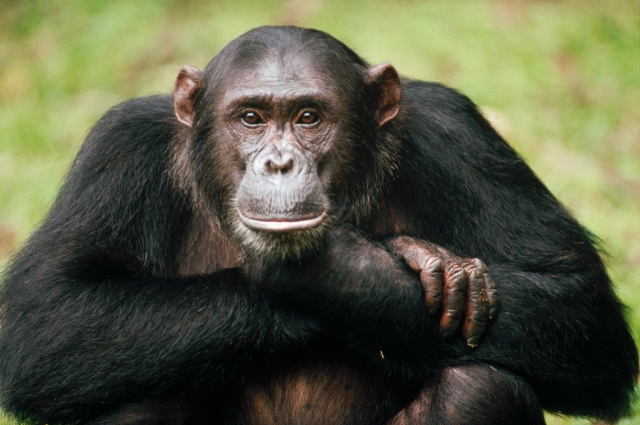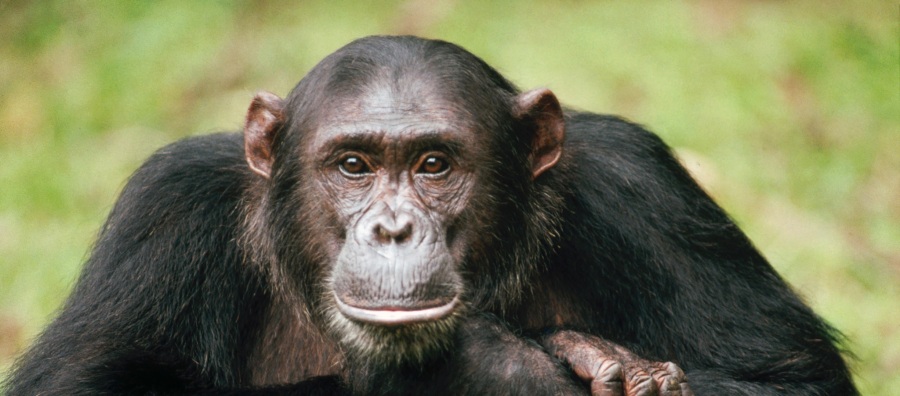A few months ago during the coffee break at an animal behaviour conference I was talking to a colleague about her research when she told me that to suggest that animals could feel fear or be afraid was anthropomorphism, the mistake of assigning of uniquely human characteristics to other animals. This view is not at all uncommon among practicing scientists and the term anthropomorphism is often extended to include a whole range of behavioural traits and emotions such as impatience, joy, expectation, boredom, anger, happiness or sadness, and yet there is good evidence that these emotions are not unique to humans. For example, dogs have been shown to exhibit jealousy, elephants have empathy, and Capuchin monkeys get visibly angry when treated unfairly as this video shows.
The possibility than animals can think for themselves is also often questioned and yet we know that some animals such as chimps and dolphins have a sense of self. There are also examples of animal behaviours that surely require some degree intelligence and forward planning such as innovative tool use by chimps and deception by ravens.

One of the main arguments against using anthropomorphic language to describe animal behaviours is that there is no way to know how an animal is really feeling, we can only describe what it looks like it’s feeling but not what’s actually happening inside it’s head. But the same is also true of humans, yet no one would question the use of anthropomorphic language to describe human behaviours.
If a person says they are excited we don’t actually know that what they feel as excitement is the same as what you or I feel as excitement, to them it may be a very different thing. All we can do is observe how that person acts and behaves and decide for ourselves if that matches up with our interpretation of what excitement is. The same is true of any emotion. If I say I am or happy or bored how could you tell that what I feel as happiness or boredom is the same as what you or anyone else feels as those things? At some point we have to use our subjective judgement to decide how a person is feeling. Do their actions match our expectations for a happy person? Then we can say they are happy. Do they behave as if they are sad? Then we can say they are sad. If this applies to humans then surely it can also apply to animals, at least in some cases.
I am not suggesting that we should abandon all caution and start using anthropomorphic terms carelessly. What I am suggesting is that so long as we clearly define our terms we should be able to use words like ‘afraid’ or ‘excited’ to describe animal behaviours when those terms well match what we see. If I want to describe anger in animals I should be able to use the word anger so long as I clearly state what I mean by the term and the behaviour that I am describing well matches what most of us would recognise as anger.
Of course, there are cases where using anthropomorphic terms really isn’t appropriate. If I read a paper that described ‘angry’ aphids or ‘jealous’ earthworms I would be dubious that those animals really could feel those emotions. In other cases I would have much less of a problem. Can chimps get angry? I think so. Are rats afraid of predators? It seems likely.
For many scientists, including people who I work with, the fear of using anthropomorphic language seems deeply ingrained and I think this affects how we view the behaviour of animals. Not all animals are mindless automatons that blindly follow their pre-programmed instincts. Many animals, especially among the vertebrates, have complex behaviours and emotions which are best described using the same terms we use for those things in human animals. I think it is time we started describing animals behaviours exactly as we see them. We must define our terms and we must be clear but so long as we are there should be little problem to this approach.
For those that still doubt that animals have can have thoughts and emotions like ours I recommend this TED talk.
For another view I also strongly recommend this post by Jilly at her blog fluffysciences
What do you think? If you have an opinion please leave a comment below.


For what it’s worth, I wrote a critique on the Frans de Waal Ted talk – http://danieldmello.blogspot.in/2013/03/moral-behaviour-in-animals.html
Hi Danit,
Thanks for your comment! It’s always interesting to get an alternative opinion on something and I really enjoyed reading your take on it. I Think your point about dominance is an interesting one and may be important. Although, I suspect De Waal may well be aware of this but a TED talk is far too short to go into to all the limitations of a study. I confess I haven’t read many of his papers on this so I’m not sure if discusses this issue there or not.